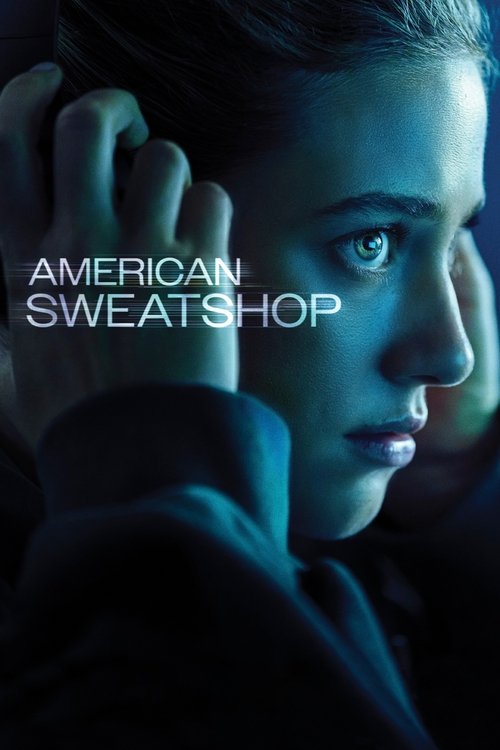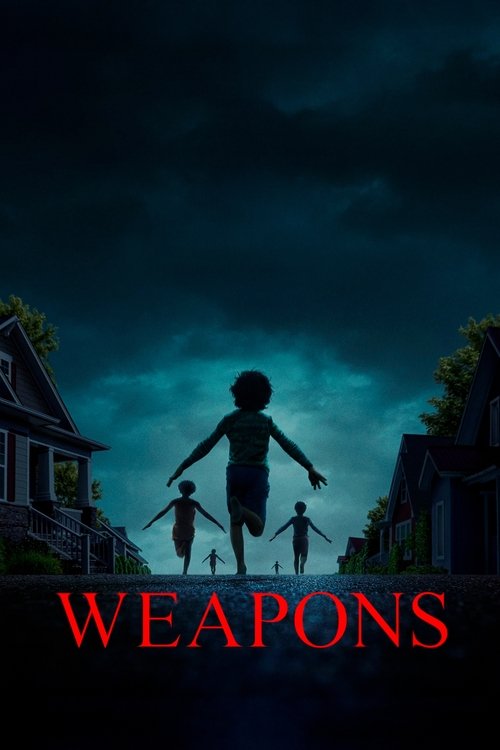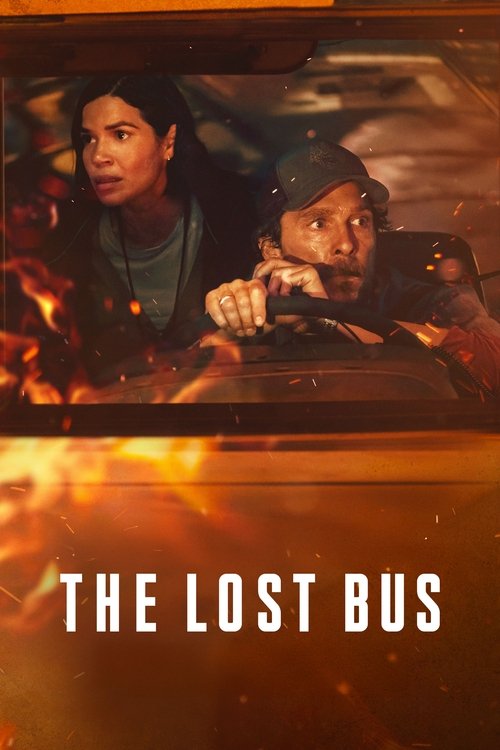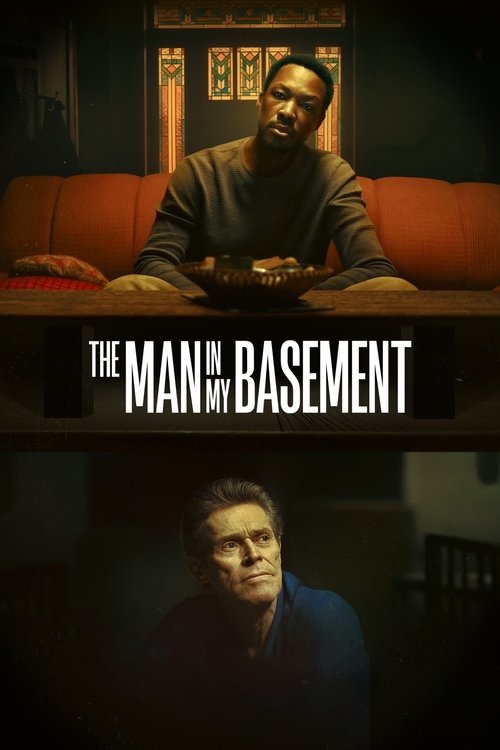
Ask Your Own Question
What is the plot?
Daisy Moriarty sits alone in a dimened cubicle at three in the morning, scrolling through an endless stream of flagged clips on a content moderation platform. She fast-forwards, rewinds and applies labels with practiced fingers; the fluorescent light above her head hums. A single short clip catches her eye: a handheld video shot inside a packed industrial room where dozens of people sit shoulder to shoulder at sewing machines. A man in a reflective vest drags a young woman away from her station, slaps her against a concrete column and punches her repeatedly while other workers watch in silence. The woman's blouse bears a faded tag with the word "Harrison" and a partial logo; a poster on the far wall reads "Hire Local -- Brazos County Jobs." Daisy pauses the frame, enlarges a reflection in a dirty window that shows a loading dock and a delivery truck with the letters HAP on its side. She downloads the clip to her encrypted drive, because the moderation interface keeps flagging and auto-archiving the file as "graphic content" and their policy bots will remove it without human review.
Daisy attempts to escalate the video through the company's internal channels. Her team lead, Grace, admonishes her on a late-night video call: Daisy is not to take platform removals personally, and she is not to engage outside the scope of her job. The clip, Grace warns, is likely a violation but the takedown is automated; the company protects itself by not preserving graphic footage indefinitely. Daisy, who struggles with insomnia and a fractured personal life, decides not to let it go. She studies the clip for details. The reflective vest has a worn patch that looks like a stylized "H". The wall clock reads 11:43. The room smells of dust and machine oil. She pulls metadata from a duplicate she had saved before it was scrubbed by the platform and finds a brief string of GPS coordinates embedded in a thumbnail: a rural coordinate that, when she plugs it into a mapping site, places her in the Rust Belt outskirts of a town called Harrison in a state-run county labeled Brazos County.
Daisy calls an old friend, a labor organizer named Mara Alvarez, who runs a small nonprofit that helps migrant and low-wage workers. Mara answers groggily and then listens as Daisy describes the clip, the logo fragment and the clock. Mara says she has heard rumors about a factory contracting for a fast-fashion company and agrees to check her contacts. She tells Daisy she will call back with anything, and she does: a recruiter named Rosa who runs temp placements in Harrison confirms that Harrison Apparel ("Harrison Apparel Products -- HAP") has been using undocumented workers on a night shift and that they've had reports of beatings when workers try to leave. Mara says their office is ten miles outside town, on County Road 12.
Daisy books the next bus with money she has been saving. She tells her roommate, Jenna, she will be gone for a few days to visit a friend; she does not tell Jenna about the video. At the Harrison Apparel line, Daisy checks in with the temp agency under a false name and gets assigned to the late sewing shift. She carries a small camera and a voice recorder hidden inside a water bottle. The factory is a low-slung building with barred windows, a chain-link fence and a neon sign that flickers HARRI... The night foreman, Leo Ramos, is short and thick-shouldered; he sizes Daisy up and assigns her to the left-hand line. Machines thrum; a fluorescent lamp swings over each bench. Daisy sits beside a woman named Ana, who is thin, frightened and speaks little English; Ana flinches when a supervisor, a man named Ernesto, barks about production numbers.
Daisy uses her breaks to test the factory's Wi‑Fi and finds a guest network named HAP_TEMP_2. The network is unsecured and names a subnet that points to a server hosted at an address registered to a shell company, Pennfold Logistics, which in turn lists a corporate parent called Harrow Manufacturing. Daisy scribbles the names into her notebook and slips her hidden camera into a pocket. Over the next two nights she records supervisors berating workers, withholding wages and locking exit doors at shift change. She photographs a whiteboard with a list of clients--several brand names are marked with codes--and a handwritten note, "STAY QUIET = KEEP CONTRACTS." She sees security guards thread radios into their belts; one of them is Daniel Ortiz, a tall man with a scar across his jaw. Ortiz scans faces at the gate like a prison guard.
On the third night, Daisy finds a closed roll-up door slightly ajar. She slips through and follows the metal corridor into a narrow annex where a single fluorescent bulb hangs over an old wooden table. Inside, a grim scene unfolds: a group of workers are lined up while a man in a suit--Edwin Price, the local plant manager--reads a list of names. A smaller group of men in reflective vests, including Leo and Ernesto, haul one woman, Ana, into a dim storage room. She is bloody, her cheek swollen, and Price slaps her down onto a pallet. Daisy raises her camera. Price notices the angle of the light change and signals Leo. Leo lunges toward Daisy. Daisy ducks into the stacks of packed fabric and bolts back to the main floor where machines roar. Leo follows but loses her. At the gate, Ortiz watches Daisy exit and scans her face on the visitor log; she forges a badge and slips through.
Daisy texts Mara a scrambled location and waits in the parking lot. Miguel, a Honduran coworker with a shaky smile who had confided that he is saving money to send back home, appears and comforts Ana at a distance. Daisy shares the footage with Mara over an encrypted line. Mara insists they must rescue Ana and bring this to the press. They decide to go back that night with a small team: Mara, Daisy, Miguel and a local photographer named Carla who has a small following on social media and a reputation for documenting labor abuses. Carla brings a compact drone. The four plan to get Ana out during a shift change when the guard posts are thinner.
They do not anticipate Ortiz. As they move toward the back entrance, Miguel tries to block a guard's path so Daisy can slip inside. Ortiz draws his service pistol--an unmistakable flash in the sliver of light--and fires once. The bullet strikes Miguel in the chest; he collapses on the gravel. Daisy runs to him, kneels, presses both hands to his wound and screams for help. Ortiz shouts for silence and steps forward. Mara lunges at Ortiz, and in the scuffle Ortiz fires again, and Mara falls with a bleeding shoulder. Carla hits record and their images streak across her phone in shaky close-up. Daisy pockets the footage and, in a frenzy, pulls Miguel into her car. She drives him to the county hospital. Miguel has lost too much blood; doctors rush him into emergency surgery but he is pronounced dead on arrival. Daisy stands in the hospital corridor as a social worker wraps a sheet over Miguel's hands. Ortiz watches from a black SUV across the street; he does not attempt to hide. Daisy takes a photograph of his license plate.
Daisy returns to Harrison with Mara and Carla the next day, intending to retrieve the rest of her footage and to rescue Ana if she is still alive. They park several blocks away and move on foot. A detective named Raymond appears at the factory gate in a plain car and tells Daisy they cannot enter; he says management has filed a complaint about trespassing. Daisy asks where Miguel's death is being investigated and if they can see footage; Raymond stares at the photo of Ortiz on Daisy's phone and then pockets it. He tells Daisy he will pass the information along. Daisy senses he is deflecting and persists, but Raymond walks away. Later that evening, Daisy and Carla watch surveillance footage from a security camera Carla had stolen earlier: the file shows Miguel being shot in the parking lot and Ortiz walking calmly back to his post. The timestamp shows Edwin Price bending toward Ortiz in the frame and then the two talking in a loud whisper. The whisper is muffled, but Edwin pats Ortiz on the shoulder. Daisy realizes that the violence did not happen in a vacuum.
Daisy uploads a short excerpt of the violence to a private server and forwards encrypted links to a local investigative reporter, Marcus Hale, who has a history of breaking industrial scandals. Marcus arranges a meeting and tells Daisy that Harrow Manufacturing is a major supplier to multiple retailers and that Harrow has been aggressively cutting costs by contracting with local managers like Price who run sweatshop operations. Marcus warns that he needs more evidence than a single clip to file a story that will stand up to legal scrutiny. Daisy promises him a cache of footage that she hid on a USB drive in a book at a bus station locker. Marcus says he will be ready to run within forty-eight hours.
Edwin Price hears about the leak. He convenes a meeting with Leo, Ernesto and Ortiz in a rusted office and orders them to find the whistleblowers and recover any footage. He says the company cannot afford a scandal. Leo suggests intimidation; Ortiz volunteers to take care of the men at the bus station. Ortiz tracks Daisy to the locker and, when he ambushes the meeting between Daisy and Marcus, he is waiting in the corridor with a baton. He assaults Marcus and smashes the USB drive beneath his boot. Daisy fights back and runs, but Marcus lays bleeding on the linoleum; his nose is broken. Daisy posts an excerpt of the footage on a public platform via an anonymous proxy; the clip is short and graphic and is flagged within minutes and removed, but the first ripple of public attention begins: a local activist posts a screenshot and a blog picks up the accusation. The story gains traction among community groups and an independent journalist re-uploads the footage to multiple servers.
Price, pressed, escalates. He orders workers to lie to any external investigators. He bribes two local officials to ignore the plant. Detective Raymond sits in the back of Price's office and receives an envelope; when Daisy later confronts him on a public sidewalk he gives a vague answer and says he is awaiting formal complaints. Daisy, angry, records the conversation. She realizes the system she once trusted has been co-opted.
Ana disappears from the line. Daisy suspects Price had her removed to silence her. With Mara's help, Daisy tracks a delivery truck to a storage yard three miles outside town. The yard is a tangle of trailers and shipping containers. Daisy and Mara sneak into the yard at night and find Ana alive in the back of an open trailer, pale and bandaged, her wrists bruised. Price's men spot them. Leo grabs Mara and punches Ana in the face; Daisy hits Leo with a crowbar; the crowbar snaps and Leo spins on her, opening a gash on Daisy's forearm. Ortiz opens fire from the yard entrance. Daisy runs, pulls Ana free and pushes her into Mara's car. As they back away, Ortiz runs toward Daisy and swings a pipe. The pipe connects with Daisy's shoulder and she staggers. Ortiz raises the pipe to strike again. In that instant, Leo, who was in the trailer, lunges at Ortiz because Ortiz has begun to threaten Edwin on a private radio; Leo and Ortiz grapple. Ortiz's weight slips on loose gravel and he falls, his head striking the trailer hitch. He slumps with a wet crack. Daisy hears no breath. Daisy checks Ortiz and finds him motionless; she notices a thin trickle of blood at the back of his head. Leo stares at Ortiz and at Daisy, shakes his head and shouts into his radio, then flees into the night. Daisy does not attempt to move Ortiz. She drives Ana and Mara to a safe house Mara knows.
News of Miguel's killing and the leaked facial footage break across local outlets. The manufacturer issues a statement denying wrongdoing and promising an internal review. Marcus attempts to publish an investigative piece but confers with his editor, who worries about libel and wants more than anonymous footage. Marcus demands to be on-air and insists they math the production schedules and payroll records to show a pattern. Daisy delivers the rest of the footage to Marcus: hours of hidden camera recordings, the whiteboard with brand codes, the guest network logs registered to Pennfold Logistics, and a photograph of Edwin Price signing a contract with Harrow Manufacturing executives. Marcus files the story with all of the documents attached. The next morning, Harrow Manufacturing's stock slips on the news.
Price convenes an emergency meeting with his superiors at Harrow and insists he is a scapegoat; Harrow tells Price to weather the storm while they launch a legal review and leak counter-evidence. Harrow's legal counsel contacts the platform and demands that all graphic clips be removed and that any moderators involved be terminated for leaking. The platform issues a press statement confirming they are reviewing policy and removing "unauthorized" content.
Detective Raymond resists pressure to investigate Price. Instead he arrests Daisy for trespassing, claiming an officer caught her in the factory's office complex with stolen property. Marcus obtains the arrest footage and runs it on the evening news, focusing on Daisy's role as a former platform moderator who takes videos outside the system. Public opinion is split; some vilify Daisy for taking the law into her own hands, others praise her as a whistleblower. Daisy sits in a holding cell for twenty-four hours. At a bail hearing, a judge knows Miguel's name and denies Raymond's motion for extended detention; Daisy posts bail with funds raised by Mara and Carla's online network.
Daisy decides to force the issue. She arranges a live stream event to play the uncut footage and to invite workers and whistleblowers to testify. Marcus secures a small community center and invites local reporters. Harrow sends a legal team to prevent the stream and hires a private security company to intimidate participants. Daisy presides over the event, places Ana in the front row and invites her to speak. Ana speaks in broken English through a translator and says that she was forced into the factory and beaten when she complained about pay. During the Q&A, a man in the audience stands and says he saw Daisy on the night of Miguel's killing; Detective Raymond stands in the back and steps forward with an arrest warrant for Daisy, claiming the footage was stolen property. Carla streams the confrontation live, and the clip spreads across alternate platforms.
As Daisy leaves the center with Mara and Marcus to go to a scheduled press conference, a black van blocks their route. Men in plain clothes jump out and attempt to seize the server that Marcus brought for evidence. A fight breaks out. One attacker slams Marcus into the van and he cracks his skull on the metal. Marcus falls and his skull fractures; he bleeds out on the asphalt. Daisy grabs the detached server and runs into the street with it; a private security man tackles her and tries to pry the drives away. Daisy, fighting for the drive, pushes him back toward a delivery truck. The truck's driver slams on the brakes to avoid hitting them; the security man strikes his head against the truck's rear bumper and collapses unconscious. Daisy and Mara escape into an alley.
The live stream, however, is saved; an activist in the audience reroutes the feed to a decentralized server. Within hours, the uncut video of the beating, Miguel's killing, and the attack on Marcus circulates across international news outlets. Lawmakers in the state demand hearings. Harrow Manufacturing's legal counsel disavows Price, placing him on administrative leave. Harrow announces an internal audit while the platform promises to change its policy regarding preservation of violent content for law enforcement purposes.
Edwin Price flees Harrison in the early morning. He heads to the warehouse to collect cash and documents. At the gate, Leo waits and confronts him. Leo accuses Price of sending out men who killed Miguel and who tried to kill Marcus to prevent publication. Price denies it and offers Leo a share of a quiet payoff to keep him silent. They argue. Leo, who has been running on fear and resentment, lunges at Price with a wrench. They scuffle; Price backs toward a running fabric press and falls into the machine's maintenance access. The machine's gears catch Price's jacket and pull him in. Leo scrambles to disengage the emergency stop and is unable to reach inside as Price cries out. The press grinds; it crushes Price's chest and head. Leo staggers away vomiting, his hands streaked with oil and blood. He collapses to the floor, sobbing. When Daisy arrives with a small group of reporters and law enforcement who finally answered the national coverage, they find Price stuck in the press with fatal injuries. Daisy watches as EMTs confirm his death at the scene. Leo sits on a shipping crate with his head in his hands; Detective Raymond approaches, looking pale and defeated.
The state attorney announces a series of immediate actions: a grand jury will investigate Harrow Manufacturing, an emergency inspection will examine Harrison Apparel's contracts and the Department of Labor will suspend specific vendor relationships. Harrow's executives are subpoenaed. Detective Raymond resigns amid allegations that he accepted payments from Price and Ortiz; investigators find bank transfers from Harrow's regional account to Raymond's personal account. He avoids criminal charges for a period pending further inquiry, but he is publicly discredited in media coverage.
Daisy testifies before the grand jury and in a televised hearing. She provides the original unedited files, the whiteboard photographs, the Pennfold Logistics server logs and her notes. Ana testifies about the shift work and the beatings. Carla's drone footage corroborates the timeline. The grand jury indicts several managers and, eventually, Harrow Manufacturing faces civil suits from the families of injured and deceased workers. The labor department issues fines and revokes contracts pending compliance. Marcus's death is ruled homicide by the county coroner; an independent prosecutor files charges against the private security company that attacked the press conference. Leo is arrested for his role in Price's death and for other labor violations; investigators charge him with assault and conspiracy. Ortiz's death is listed as an accidental fall with contributing factors; a medical examiner's report cites blunt force trauma to the head consistent with a fall.
Months later, Daisy sits on a bench outside a courthouse as hearings continue. She receives a text message from Ana: "Home safe. Thank you." Daisy presses the phone to her ear and hears Ana's quiet voice, then an uncertain laugh. Journalists swarm Harrow Manufacturing's headquarters as prosecutors file additional claims. Daisy's employer conducts an internal review of moderation practices; the platform issues a revised policy for preserving violent content and for cooperating with law enforcement on potential crimes. Grace, Daisy's team lead, speaks to human resources about creating a protocol for moderators who encounter evidence of crimes, and a liaison unit forms to connect moderators with investigators.
Daisy returns to her apartment. Jenna greets her with a bag of groceries and an exhausted hug. Daisy opens a drawer, takes out the tiny water-bottle camera that recorded the first footage and places it in a padded envelope. She mails it to the state attorney as part of the evidence chain and keeps a printed photograph of Miguel in her wallet. In the final scene, Daisy sits at her kitchen table, her arm in a cloth wrap from the pipe strike, and watches a broadcast: a federal official reads a list of indictments and a scrolling headline announces a civil settlement between Harrow and the families of several victims. Daisy closes her laptop, deletes the moderation app from her phone and steps outside. She walks past a small rally where labor organizers hand out flyers and workers in reflective vests chant names of those lost. Daisy pauses, then moves with the crowd down the street, carrying the photograph of Miguel in her pocket and looking ahead toward the courthouse where hearings continue to unfold. The camera pulls back as she joins the march, and the credits roll on footage of lawyers filing papers, reporters typing transcripts and workers leaving the factory lot at dawn under new posted notices of inspection.
What is the ending?
The ending of American Sweatshop (2025) centers on Daisy Moriarty's intense confrontation with the psychological toll of her job as a social media content moderator. After becoming obsessed with a particularly disturbing video, Daisy reaches a breaking point where she challenges the company's ruthless policies prioritizing profit over human well-being. The film closes on a powerful, ambiguous note highlighting Daisy's rage and resilience, leaving her fate open but symbolically representing the struggle of many women pushed to their limits by systemic pressures.
In the final sequence of American Sweatshop, the narrative unfolds with Daisy Moriarty deeply affected by the traumatic content she must moderate daily. The scene opens with Daisy at her workstation, visibly shaken after viewing a harrowing video of a young woman restrained and threatened by a hooded man wielding a hammer and nail. The video's graphic nature causes Daisy to faint, underscoring the extreme psychological burden she endures.
As Daisy recovers, she becomes consumed by a vengeful obsession with the video's content and the injustice of the platform's policies. She attempts to delete another distressing video--a woman jumping from a building--but is reprimanded by her supervisors for violating company rules. This confrontation reveals the company's prioritization of profit and engagement metrics over employee mental health and ethical considerations.
The tension escalates as Daisy's internal struggle intensifies. Surrounded by coworkers who cope through anger outbursts or drug use, Daisy's isolation grows. The film portrays her as a figure embodying the complex emotions of warranted female rage, bending rules until breaking under societal and corporate pressures.
In the closing moments, Daisy's defiance culminates in a scene described as a "chef's kiss" by critics--a carefully crafted, emotionally charged finale that refuses to offer a neat resolution. Daisy's fate is left ambiguous; she neither fully succumbs nor triumphs but stands as a symbol of resistance against exploitative systems.
Other main characters, such as Daisy's coworkers, are shown in various states of breakdown or detachment, emphasizing the widespread impact of the toxic work environment. The film ends with Daisy's quiet but powerful assertion of agency, leaving viewers to reflect on the ethical ambiguities and human costs behind the digital content moderation industry.
Is there a post-credit scene?
Yes, the movie "American Sweatshop" (2025) has a post-credit scene. In this scene, Daisy, the protagonist, is shown attending what appears to be a job interview after passing her nursing exams. During the interview, she reveals a disturbing conviction that sometimes "the only way to stop a bad thing is another bad thing." The interviewer is then revealed to be the same man whose face haunted her throughout the film as the perpetrator in the violent video she was trying to expose. The scene ends with Daisy giving a half-hearted smile to the camera, implying she has been preparing for this confrontation and may have more sinister motives than initially thought. This post-credit scene leaves the story unresolved and ends on a note of uncertainty and psychological complexity rather than closure.
What specific traumatic video does Daisy Moriarty discover, and how does it affect her actions throughout the film?
Daisy Moriarty discovers a violent video that appears to be a real brutal act rather than staged content. This video deeply traumatizes her, leading her to obsessively investigate its origins and the people involved. The trauma changes her personality from warm and responsible to irritable, reckless, and emotionally unstable, driving key plot events such as her confrontation on the film set and her deteriorating personal relationships.
Who is the man Daisy confronts on the film set, and what is his significance to the violent video?
The man Daisy confronts on the film set is identified by his shoes as one of the individuals involved in the violent video that haunts her. He initially tries to comfort her and persuade her to stay, but Daisy sprays him with pepper spray and destroys the camera equipment before escaping, marking a pivotal moment in her quest for justice and her psychological unraveling.
How does Daisy's relationship with her boyfriend evolve in the film, and what triggers its breakdown?
Daisy's relationship with her boyfriend initially provides some support as he helps her study for nursing exams, symbolizing her attempt to move past content moderation. However, her trauma resurfaces violently when she hears a banging sound reminiscent of the violent video, causing her to panic and scream at her neighbor. This outburst frightens her boyfriend, who then refuses to have sex with her, leading Daisy to end the relationship, highlighting her ongoing struggle with her inner demons.
What role does Daisy's job as a social media content moderator play in the development of the plot?
Daisy's job as a social media content moderator is central to the plot, as it exposes her daily to disturbing and traumatic content that the public never sees. Her discovery of the violent video during her work triggers the main mystery and her descent into paranoia and obsession. The film explores the psychological toll of this job, showing how it affects her mental health and personal life.
What are the key emotional and psychological changes Daisy undergoes from the beginning to the end of the film?
At the start, Daisy is warm, affectionate, and responsible, especially in her interactions with her neighbor's child. After encountering the violent video, she becomes irritable, irresponsible, and reckless, driven by obsession and trauma. By the end, although she attempts to regain normalcy by studying for nursing exams and starting a relationship, she remains haunted by the video, leading to emotional outbursts and isolation, indicating a profound and unresolved psychological struggle.
Is this family friendly?
The movie American Sweatshop (2025) is not family friendly and contains content that may be upsetting or inappropriate for children and sensitive viewers. It features severe sexual content and nudity, as well as mild violence and gore, and intense or frightening scenes. The film also includes profanity and references to alcohol and drugs.
Potentially objectionable or upsetting aspects include:
- Explicit sexual scenes and nudity described as severe.
- Some violence and gore, though mild, may be disturbing.
- Intense and frightening moments related to the dark themes of social media and internet content moderation.
- Use of strong language and adult themes.
- Depictions of psychological stress and the darker side of online life.
Given these elements, American Sweatshop is intended for mature audiences and is not suitable for children or those sensitive to explicit or intense content.





































